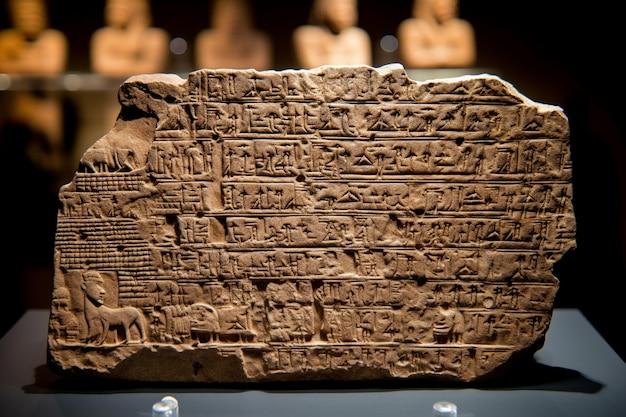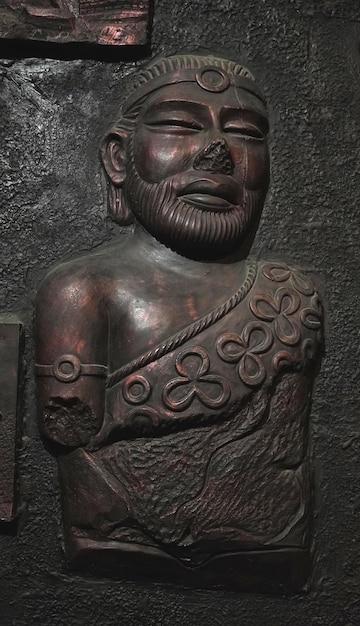Imagine a time thousands of years ago, when lush cities thrived along an ancient river. These cities were the heart of what we now call the Indus Valley Civilization, one of the world’s oldest urban societies. Shrouded in mystery, this ancient civilization has captured the attention of archaeologists, historians, and enthusiasts alike.
Among the many intriguing aspects of the Indus Valley Civilization is its unique form of communication—the Harappan script. Unlike the deciphered scripts of Egypt or Mesopotamia, the Harappan script remains an enigma, perplexing researchers for decades. Who were the Harappans? How did they write? And what led to the decline of their civilization?
In this blog post, we will delve into the fascinating world of the Harappans’ art of writing. We will discuss the origins of the term “Indus Valley Civilization,” the characteristics of the Harappan script, the decipherment efforts, and the factors that led to the decline of this ancient culture. So let’s embark on a journey back in time to unlock the secrets of the Indus Valley Civilization.
How Was the Art of Writing of Harappans
The ancient civilization of the Harappans is renowned for its impressive achievements in various fields, from urban planning to pottery. But what about their art of writing? Let’s delve into this intriguing aspect and uncover the secrets of Harappan script!
Decoding the Mysterious Script
The Harappan script has puzzled scholars for centuries. With over 400 symbols discovered so far, deciphering its meaning is no easy task. While some progress has been made, much of the script remains shrouded in mystery. It’s a little like trying to solve a crossword puzzle with half the clues missing – challenging and downright frustrating!
A Language Yet Unraveled
Unlike other ancient civilizations such as the Egyptians or the Mesopotamians, we have not yet been able to unlock the linguistic code of the Harappans. Researchers have struggled to find a bilingual inscription or a Rosetta Stone equivalent that could provide the much-needed breakthrough. Alas, it seems that the Harappan language will continue to elude us for the time being.
The Indus Valley Inscriptions
The majority of Harappan inscriptions have been found on seals made of stone or terracotta. These seals, adorned with intricate designs and motifs, were used for various purposes, including trade and administrative activities. While we may not understand the words engraved on these seals, their artistic beauty is undeniable – a true testament to the creativity of the Harappans.
The Puzzle Pieces
Despite the challenges, researchers have identified some recurring patterns in the Harappan script. Certain symbols appear more frequently than others, suggesting they might represent common words or phrases. This finding has sparked a ray of hope in deciphering the ancient script, but there is still a long way to go before a definitive translation can emerge.
Cracking the Code
In recent years, advancements in technology and new analytical techniques have revitalized the quest to decipher the Harappan script. Machine learning algorithms and statistical analysis are being employed to analyze the frequency and distribution of symbols, offering promising insights into the underlying structure of the script. While we may not have all the puzzle pieces just yet, it’s an exciting time to be a Harappan script enthusiast!
The Humbling Mystery
The art of writing of Harappans remains an enigma, leaving us marveling at the ingenuity of this ancient civilization. It’s a reminder that there are still mysteries in the world waiting to be solved, waiting to reveal the stories of our ancestors. So, let’s keep our curiosity alive and our minds open, for who knows what secrets the Harappan script may yet unveil!
That wraps up our exploration of the fascinating art of writing of the Harappans. While we may not have all the answers, the journey to decipher their script continues. Join us next time as we delve into another intriguing aspect of ancient history. Stay curious, my friends! Happy reading!
Keywords: Harappan script, decoding, mysterious, language, Indus Valley inscriptions, puzzle, code, technology, machine learning, statistical analysis, enigma, curiosity, ancient history
FAQ: How was the Art of Writing of Harappans
Welcome to our comprehensive FAQ guide on the art of writing of the Harappans! In this section, we will dive deep into the fascinating world of the Indus Valley civilization, exploring their unique script and the mysteries surrounding its decipherment. From the origins of the term “Indus Valley civilization” to the decline of this ancient civilization, we’ve got you covered. So let’s embark on this journey back in time and uncover the secrets of the Harappan writing system!
Who Coined the Term “Indus Valley Civilization”
The term “Indus Valley civilization” was first used by John Marshall, the Director-General of the Archaeological Survey of India, in 1922. Marshall was instrumental in excavating and studying the ancient sites of Mohenjo-daro and Harappa, and he recognized the significance of these sites as part of a vibrant and advanced civilization.
How Was the Art of Writing of Harappans
The art of writing of the Harappans is truly captivating. While the Indus Valley script remains undeciphered, archaeologists have discovered thousands of inscriptions on various artifacts, including seals and tablets. These inscriptions consist of a series of mysterious characters, often arranged in a linear fashion, and experts believe that they were used for administrative, economic, and religious purposes.
What Caused the Decline of Indus Valley Civilization
The decline of the Indus Valley civilization is still shrouded in mystery, but several theories have been proposed. Some scholars suggest that a combination of natural disasters, such as floods or earthquakes, may have disrupted the agricultural system, leading to a decline in food production. Others speculate that changes in trade patterns or social unrest could have played a role. However, the exact reasons behind the decline remain speculative and subject to ongoing research and debate.
How Old is Rakhigarhi
Rakhigarhi, located in present-day Haryana, India, is one of the largest and most important sites of the Indus Valley civilization. Radiocarbon dating suggests that the settlement at Rakhigarhi dates back to around 2600-1900 BCE, making it roughly 4,000-4,500 years old. This ancient city offers valuable insights into the urban planning, art, and culture of the Harappans.
What Are the Main Characteristics of Harappan Script
The Harappan script is marked by its unique and enigmatic characteristics. It consists of a set of over 400 distinct signs, some of which may represent syllables, while others could be ideograms or determinatives. Unlike other ancient scripts, such as the cuneiform or hieroglyphs, the Harappan script is still undeciphered, leaving us with tantalizing clues but no definitive answers about its meaning or linguistic significance.
What Symbolizes the End of the Harappan Civilization
The end of the Harappan civilization is a topic of great interest and speculation. While there is no single definitive event that symbolizes its demise, archaeological evidence suggests a gradual decline rather than a sudden collapse. Abandoned cities, dwindling trade networks, and the absence of large-scale monuments indicate a society in decline. However, it is important to note that the legacy of the Harappan civilization can still be seen in the cultural practices and traditions of the Indian subcontinent today.
Who Deciphered the Indus Script
To this day, the Indus script remains undeciphered. Scholars and linguists have proposed numerous hypotheses, but a definitive translation has not been achieved. The complexity of the script, the limited sample size of inscriptions, and the lack of a bilingual text have all posed significant challenges. However, efforts to unravel the secrets of the Indus script continue, and new discoveries and breakthroughs may shed light on this ancient writing system in the future.
What Was the Style of Script Written During the Harappan Civilization
The script of the Harappan civilization is known for its beautiful and intricate style. The characters were typically carved or engraved onto small stone seals, which were often used for both administrative and commercial purposes. The script is notable for its consistent use of straight lines and geometric shapes, providing a visually pleasing aesthetic. Despite its elegance, the true meanings behind these symbols remain elusive, adding to the allure and mystery of the Harappan writing system.
And there you have it! Our comprehensive FAQ guide has taken you on a journey through the art of writing of the Harappans. We explored the origins of the term “Indus Valley civilization,” delved into the characteristics of the script, and pondered the decline of this ancient civilization. While many questions still await answers, the allure and mystery of the Harappan script continue to captivate researchers and enthusiasts alike. Join us next time as we uncover more secrets from the ancient world!
Note: If you enjoyed this FAQ guide, make sure to check out our other articles on ancient civilizations, archaeology, and history. Stay tuned for more fascinating insights!

